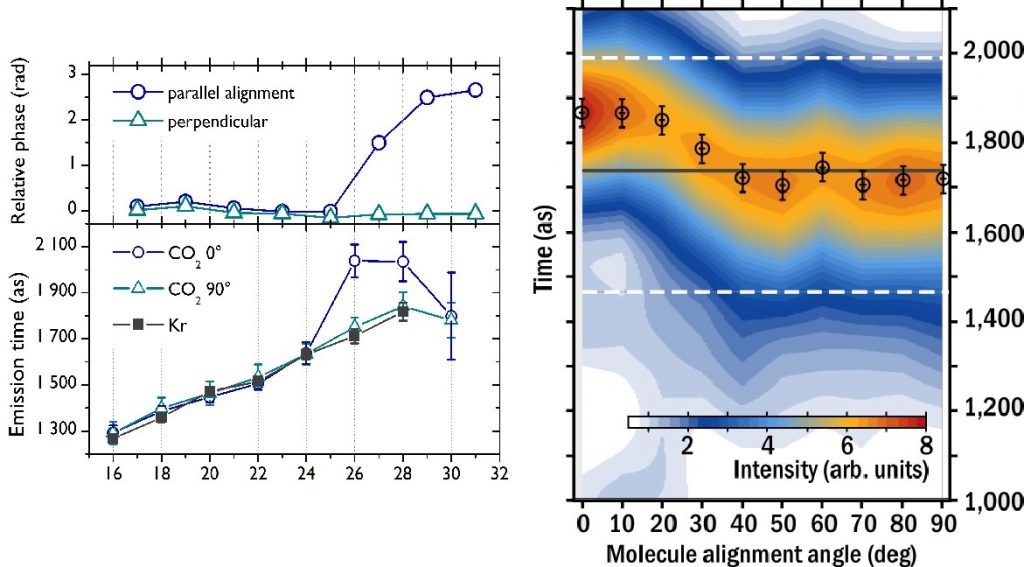Two-dimensional attosecond-scale mapping of molecular orbitals
The chemical, optical and electronic properties of a molecule are mainly determined by its highest-energy occupied orbitals. The way in which these orbitals evolve, form or break is essential information for understanding reaction mechanisms.
Observing these dynamics is a considerable challenge, which has motivated the development of attosecond spectroscopy (10-18 s), able to provide the required spatio-temporal resolution. However, current mapping techniques are one-dimensional, and cannot capture the wave function of a molecular orbital, an inherently complex and multi-dimensional quantity, without prior assumption.
The LIDYL ATTO group at CEA-Saclay, in collaboration with the LCPMR Laboratory, Sorbonne University, and the LBNL in Berkeley, California, has developed a new approach to attosecond mapping, enabling high-precision reconstruction of multi-dimensional molecular electronic orbitals.
In this method, applied here to the two highest-energy occupied orbitals (HOMO and HOMO-1) of dinitrogen, the molecules to be studied are first laser-aligned, then
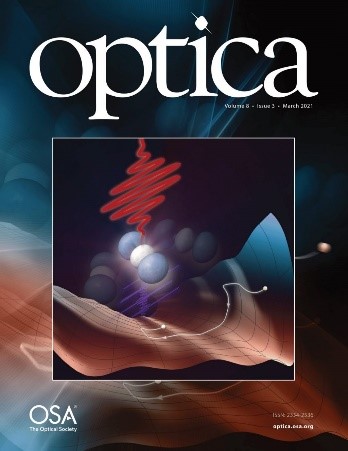
then subjected to an intense laser field, generating extreme ultraviolet radiation (XUV).
By analyzing the intensity, photon energy and phase of this XUV light, we can reconstruct the orbitals involved in this light emission.
Until now, attosecond emission from aligned molecules has only been partially characterized in parameter space: photon energy and molecular alignment angle with respect to the polarization of the generating laser. In particular, the emission phase was measured in only one dimension: either along the alignment angle or along the photon energy.
By combining optical and quantum interferometry under the same generation conditions, we were able to produce the first two-dimensional emission phase mapping.
The two-source interferometry technique was implemented with a binary diffractive optical element, guaranteeing efficient and stable measurement of the angular dependence of the phase.
Next, the RABBIT technique was used to measure the spectral phase dependence, providing both a reference for linking angular measurements along the photon energy dimension, and a high degree of information redundancy significantly enhancing accuracy.
These results pave the way for high-precision measurements of molecular structure and dynamics at angstrom/attosecond resolutions. This approach will be particularly relevant to the study of shape and autoionization resonances, as well as structural and dynamical interferences in the attosecond emission of various molecules.
Publications
“Two-dimensional phase cartography for high-harmonic spectroscopy“
A. Camper, E. Skantzakis, R. Géneaux, F. Risoud, E. English, Z. Diveki, N. Lin, V. Gruson, T. Auguste, B. Carré, R. R. Lucchese, A. Maquet, R. Taïeb, J. Caillat, T. Ruchon, and P. Salières, Optica 8, 308-315 (2021).
“Quantum-Path Resolved Attosecond High-Harmonic Spectroscopy.”
A. Camper, A. Ferré, V. Blanchet, D. Descamps, N. Lin, S. Petit, R. Lucchese, P. Salières, T. Ruchon, Y. Mairesse, Phys. Rev. Lett. 130, 083201 (2023).
“Precise access to the molecular-frame complex recombination dipole through high-harmonic spectroscopy“
S.B. Schoun, A. Camper, P. Salières, R.R. Lucchese, P. Agostini, L. DiMauro, Phys. Rev. Lett. 118, 033201 (2017).
“Laser-induced distortion of structural interferences in high harmonic generation“
F. Risoud, C. Lévêque, M. Labeye, J. Caillat, A. Maquet, P. Salières, R. Taïeb, T. Shaaran, Scientific Reports 7, 17302 (2017).
“Transverse Electromagnetic Mode Conversion for High-Harmonic Self-Probing Spectroscopy.”
A. Camper, A. Ferré, N. Lin, E. Skantzakis, D. Staedter, E. English, B. Manschwetus, F. Burgy, S. Petit, D. Descamps, T. Auguste, O. Gobert, B. Carré, P. Salières, Y. Mairesse, T. Ruchon, Photonics 2, 184 (2015).
“All-Optical Retrieval of Attosecond Spectral Phase in the Molecular Frame“
J.B. Bertrand, H.J. Wörner, P. Salières, D.M. Villeneuve, P.B. Corkum, Nature Physics 9, 174 (2013).
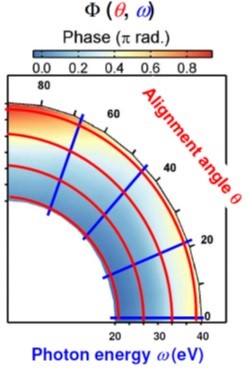
2D phase mapping of attosecond emission from aligned N2 molecules: the principle of optical interferometry measurements is shown in red, and that of quantum interferometry measurements, in blue.
Attosecond imaging of molecular orbitals
Visualizing the motion of electrons in matter requires both spatial resolution on the angstrom scale and temporal resolution on the attosecond scale. We have shown that such an “ultrafast camera” capable of imaging molecular orbitals can be obtained by using the ultrashort attosecond emission of these orbitals interacting with an intense laser field.
Indeed, attosecond emission encodes detailed information about the orbitals that radiate, most notably in the transition dipole moment – amplitude and phase – that couples the recolliding electron wave packet to the parent molecular orbitals in the recombination stage.
Read more
Information is obtained by completely analyzing the amplitude and phase of the light emitted over a wide spectral range, for different angles of alignment of the molecule (linear) with respect to the laser field. Orbitals can then be reconstructed from the dipoles using a tomographic procedure. The possibility of imaging combining attosecond-Angstrom resolutions is demonstrated in the case of the nitrogen molecule N2.
Publications:
“Attosecond imaging of molecular electronic wavepackets“
S. Haessler, J. Caillat, W. Boutu, C. Giovanetti-Teixera, T. Ruchon, T. Auguste, Z. Diveki, P. Breger, A. Maquet, B. Carré, R. Taieb, P. Salières, Nature Physics 6, 200 (2010).
“Imaging orbitals with attosecond and Angström resolutions: toward attosecond chemistry?“
P. Salières, A. Maquet, S. Haessler, J. Caillat, R. Taïeb, Reports on Progress in Physics 75, 062401 (2012).
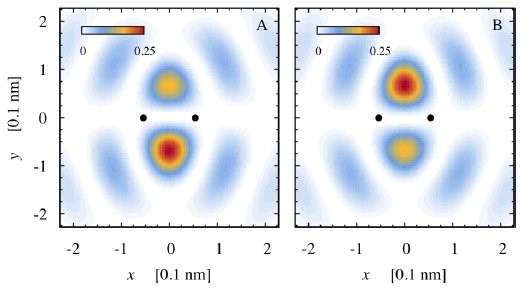
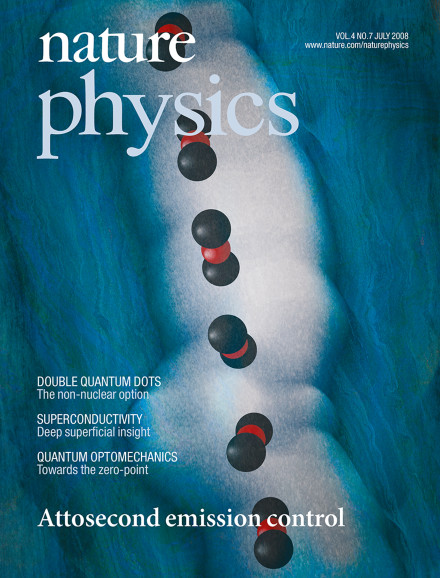
Coherent control of attosecond emission from molecules
We have studied attosecond emission and the dynamics of high-order harmonic generation in laser-aligned molecules.
In molecules, the nuclear degrees of freedom of the system greatly enrich the dynamics of high-order harmonic generation, leading to structural interference during the recombination step.
In addition, the presence of multiple valence states close in energy induces multiple ionization and emission channels, leading to dynamic interference during the recombination step.
For the first time, we have measured the phase signature on the harmonic emission of these interference effects (see figure below).
This interference effect enables coherent control of attosecond emission by varying the alignment angle. This project was featured on the cover of the July 2008 issue of Nature Physics.
Publications
“Coherent control of attosecond emission from aligned molecules“
W. Boutu, , S. Haessler, H. Merdji, P. Breger, G. Waters, M. Stankiewicz, L.J. Frasinski, R. Taieb, J. Caillat, A. Maquet, P. Monchicourt, B. Carré, P.Salières, Nature Physics 4, 545 (2008).
Left: Phase measurements of harmonics generated in aligned CO2 molecules.
Right: Pulse profiles for different molecular alignments with respect to the polarization of the generating laser.
Alignment controls timing and pulse profiles.
